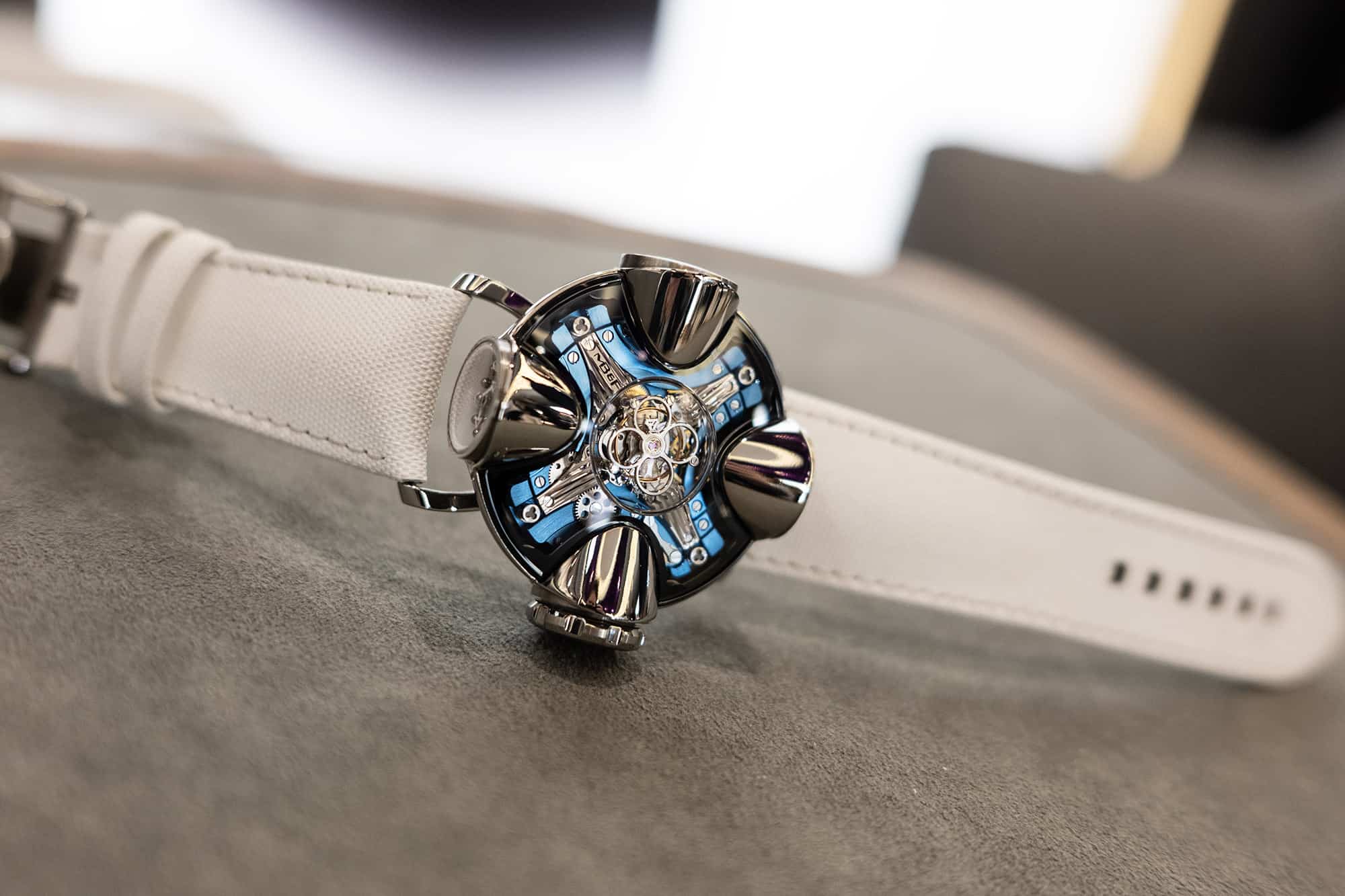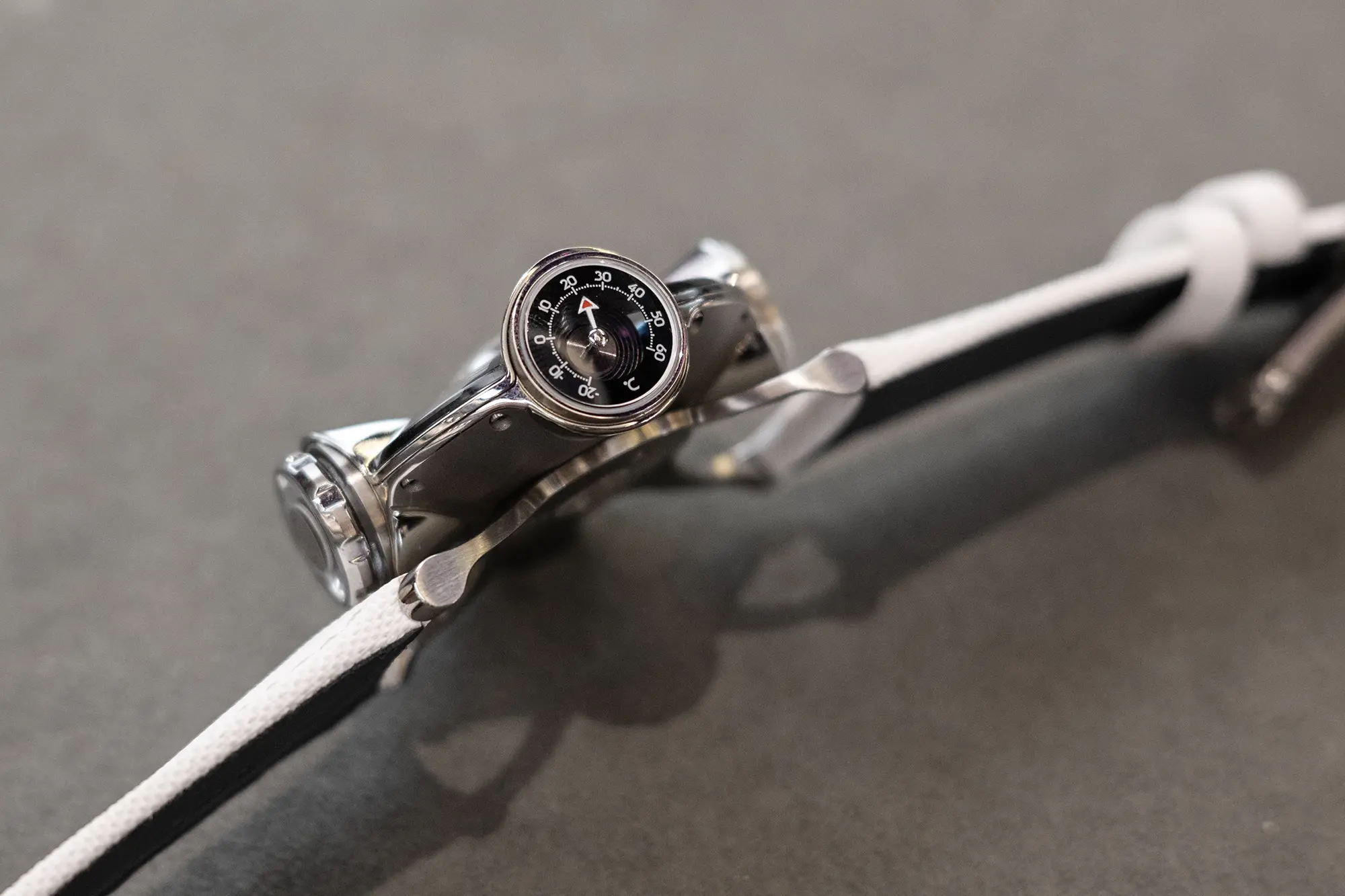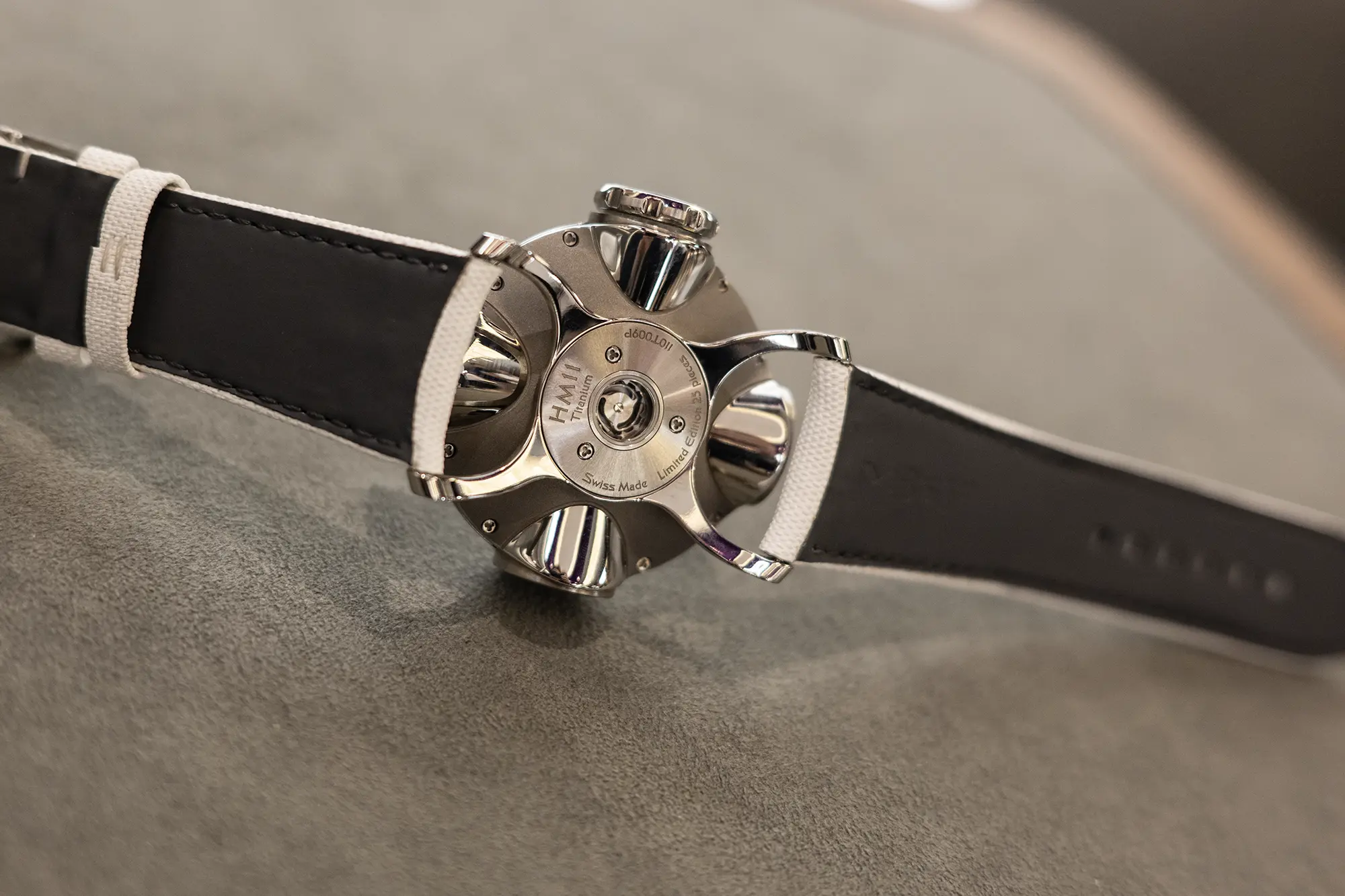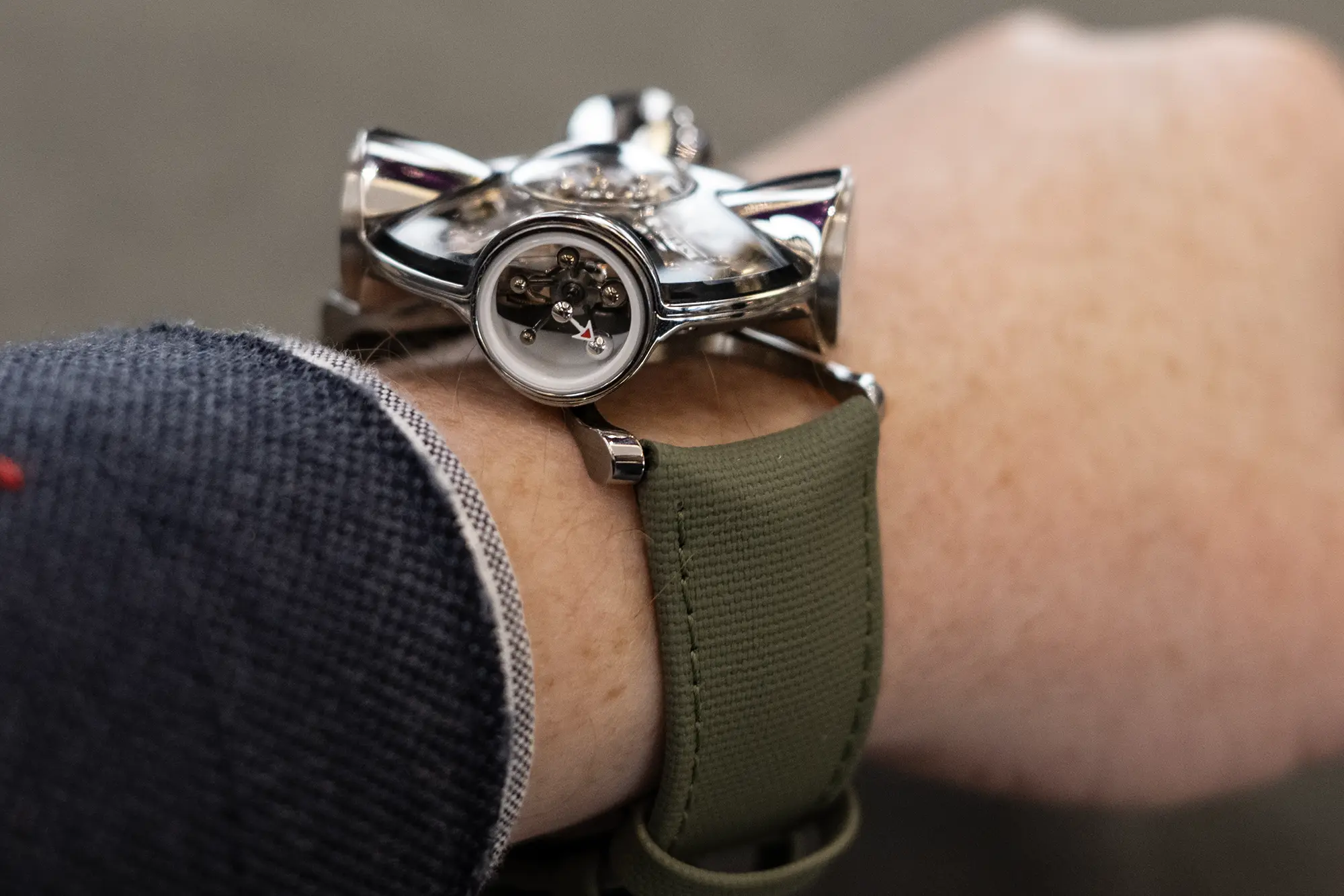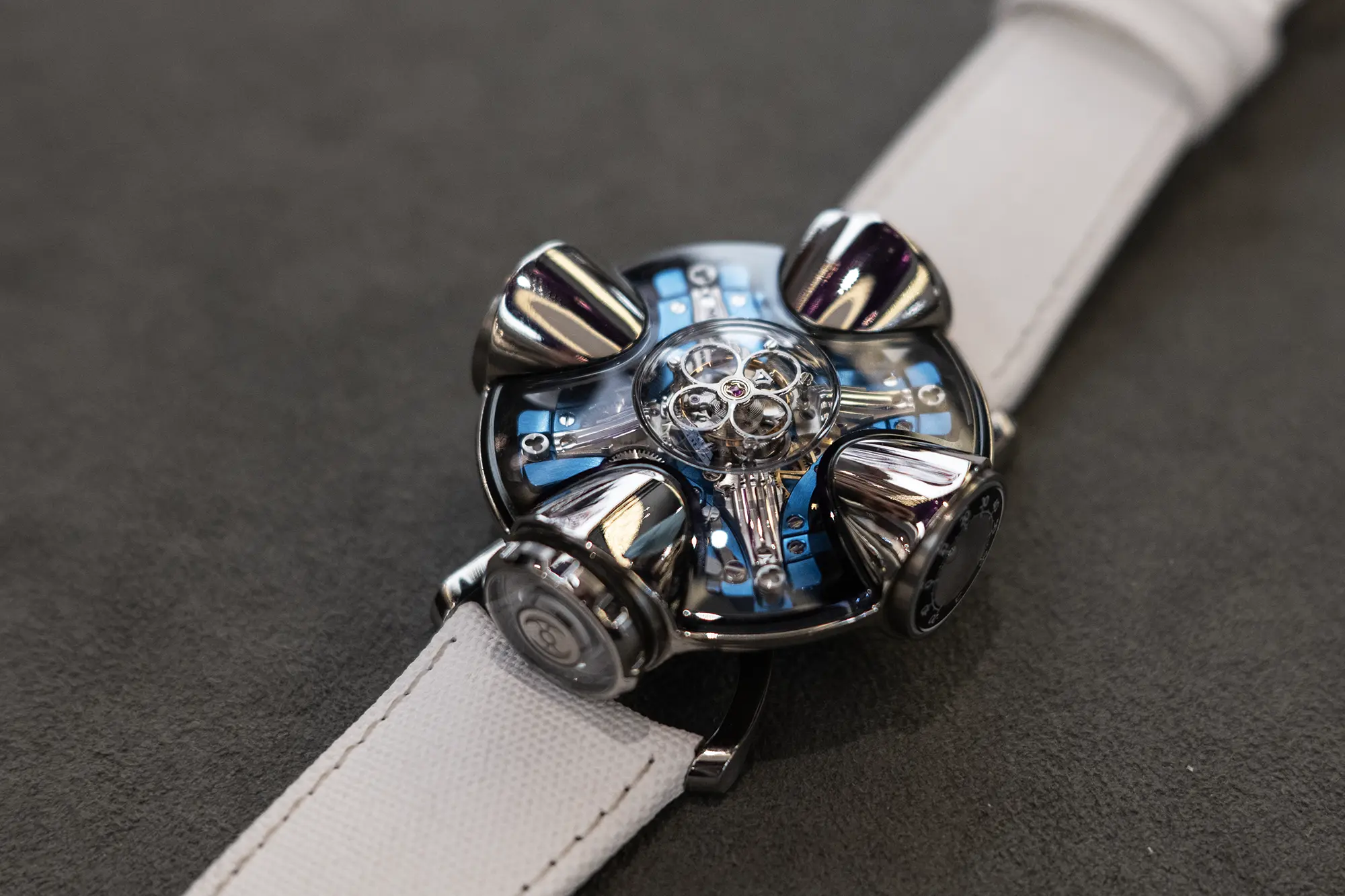A new Horological Machine was released this week in Dubai, marking the 11th numbered edition to the series. The last HM was released in 2020, making this the longest gap between new Machines since Max Busser launched the brand with HM1 in 2007. The new HM11 is simply called Architect, a nod to the inspiration for the unconventional design, which was a particular form of mid-century habitat architecture. Like the Machines that came before it, the 11 is a conceptual wonder, with no shortage of fully bespoke elements that coalesse into something otherworldly on the wrist. What it lacks in practicality, it more than makes up for in pure creativity that pushes horological boundaries in the same way the very first one did.
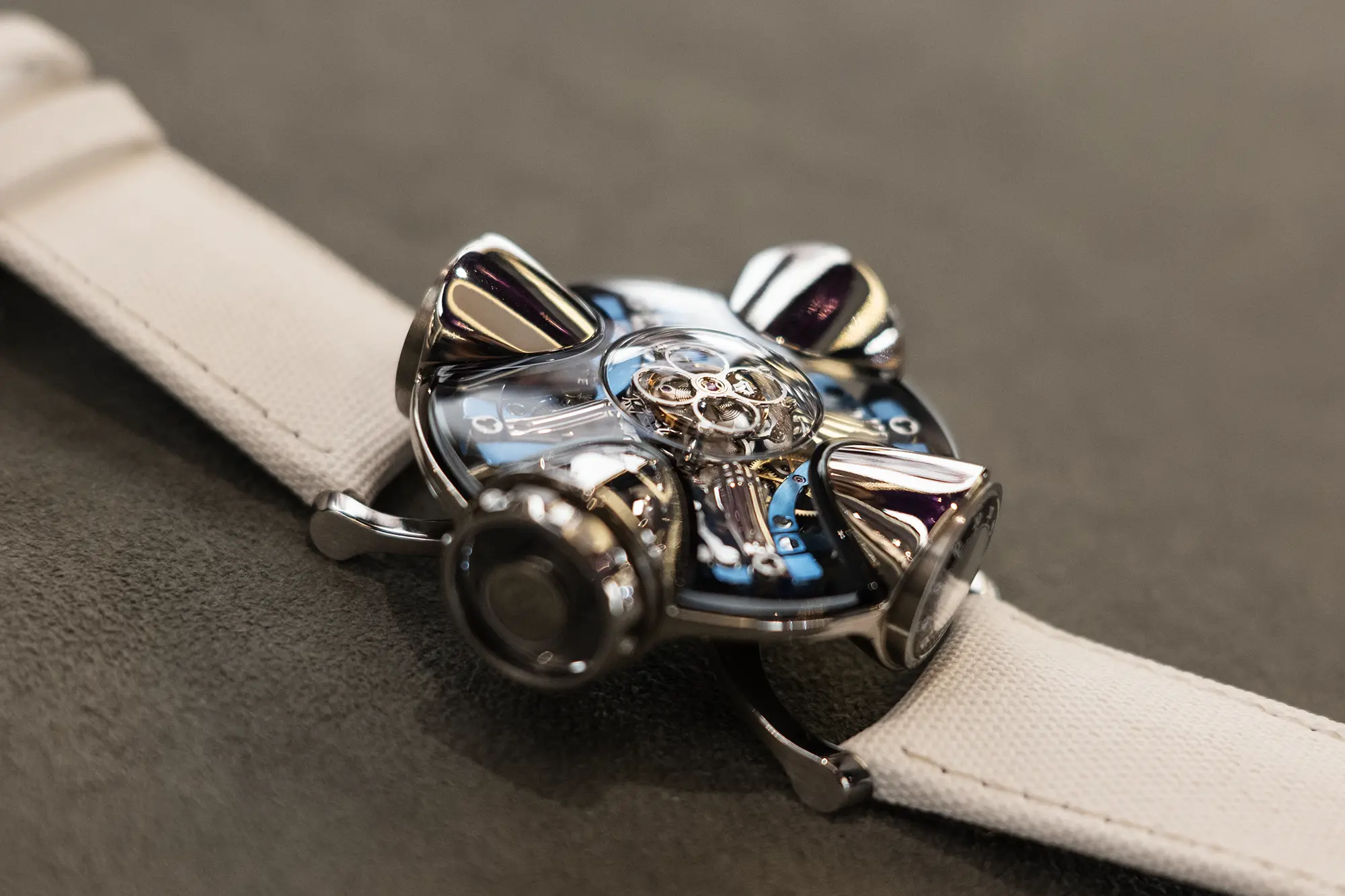
I’ll start off by saying that this isn’t a watch that’s easy to judge by conventional standards; none of the Horological Machines are. And that’s kind of the point. That said, they all present a surprising level of nuance and yes, even ergonomic practicality. The F, or Friends part of MB&F, aren’t restricted to the usual bounds of mass produced timepieces, but rather work toward the shared goal of expressing an idea and design concept provided by the MB, or Max Busser part of the equation. The end result in the case of the HM11 is a watch modeled after a habitat of another time, or even another world. It tells a story, and offers a landscape of discoveries within its 42mm by 22mm frame.
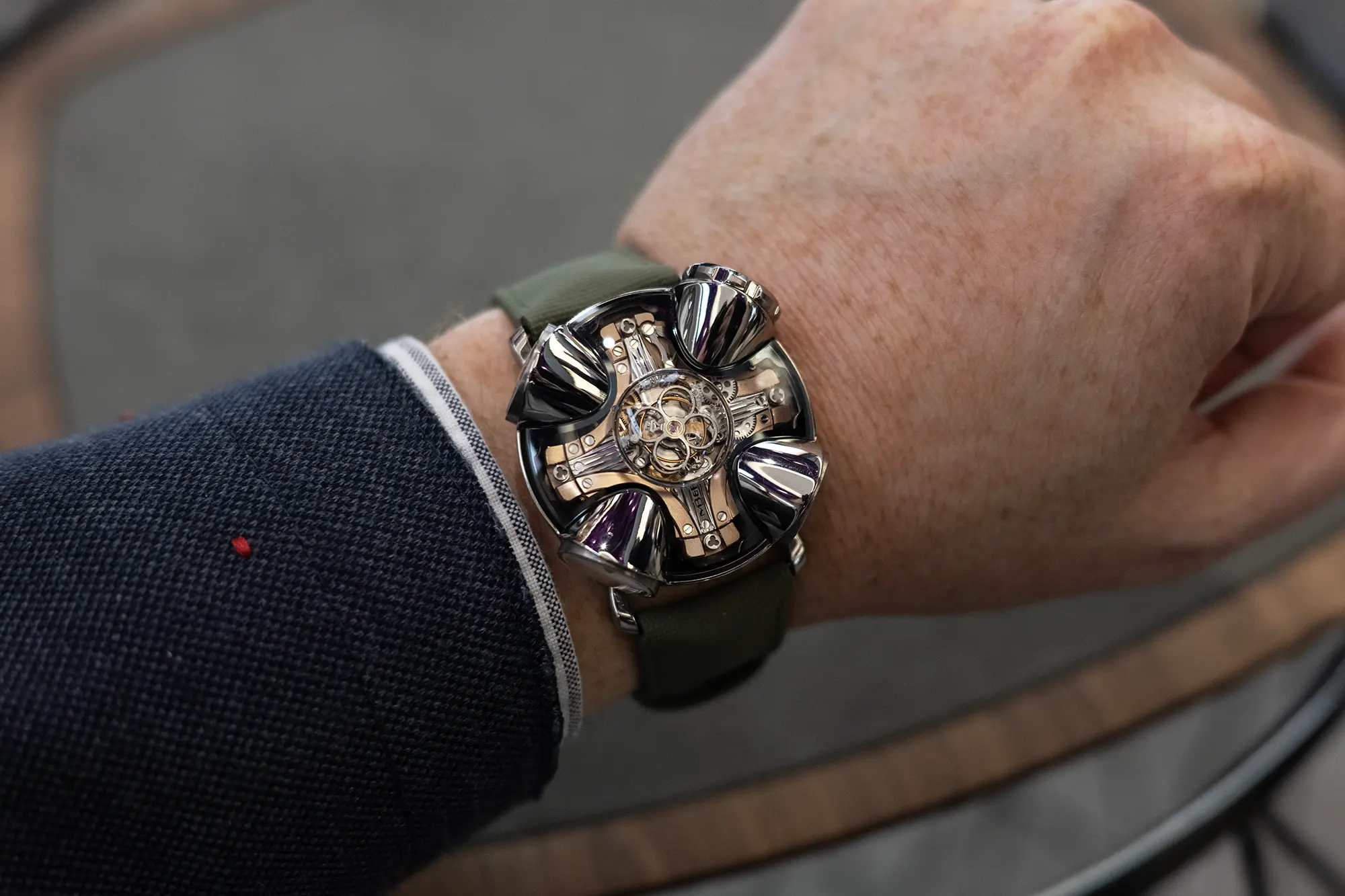









 Featured Videos
Featured Videos




